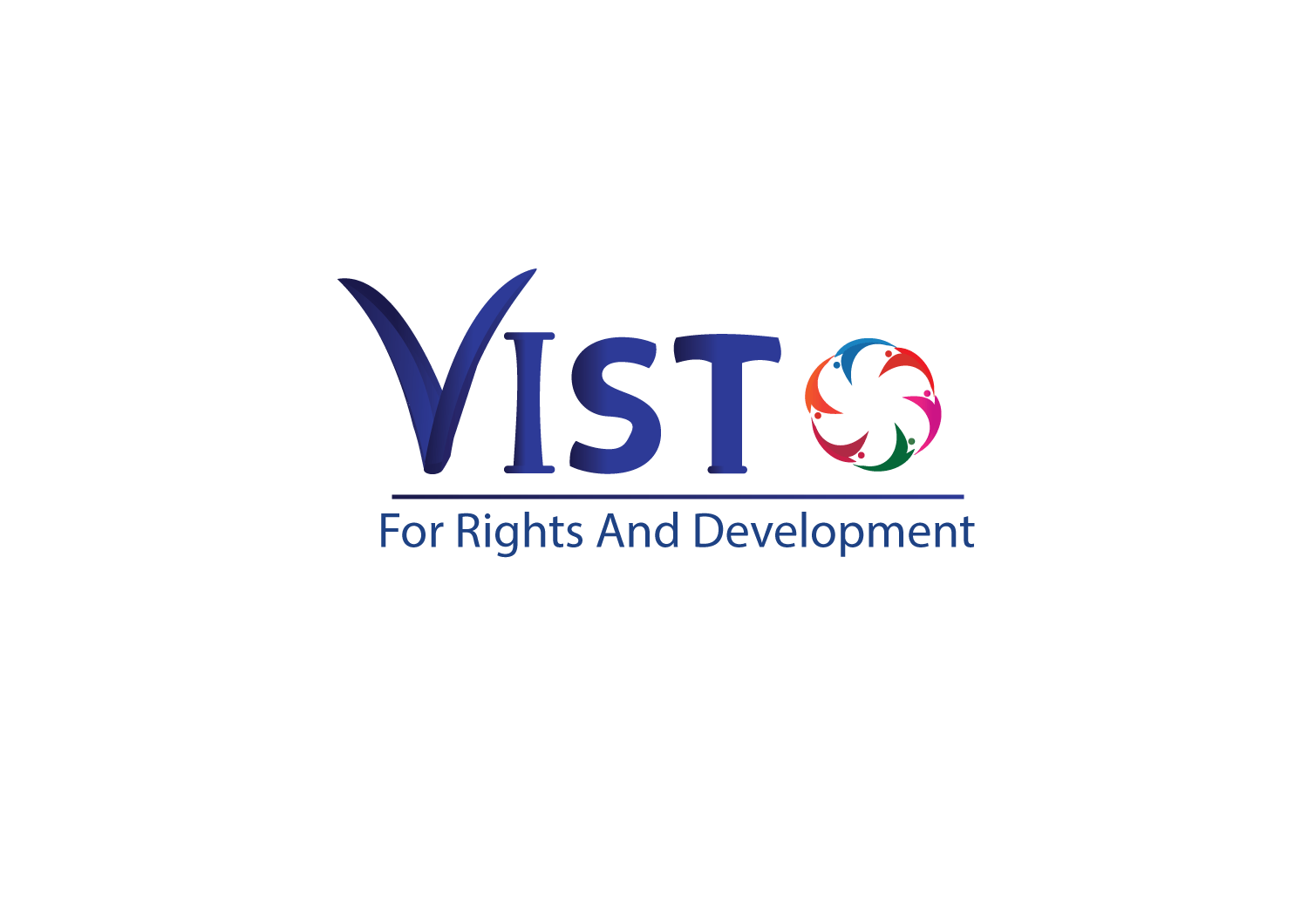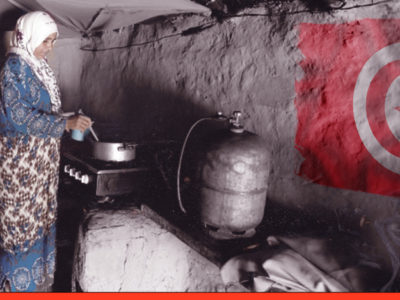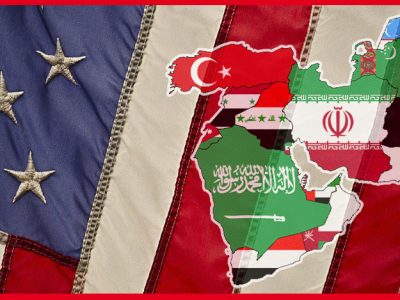Middle East youth and challenges of realising international peace & security: a reading in light of UNSCR 2250
On December 9, 2015, the United Nations Security Council unanimously adopted Resolution 2250 on youth, peace and security (YPS). Recognising the youth’s “important and positive role” in achieving international peace and security, the resolution urged governments around the world to involve the youth in decision-making processes, especially in countries suffering from armed conflicts, [including several countries in the Middle East]. The resolution was followed by the UN’s formation of an international Steering Committee, whose main goal was to prepare a progress study on youth’s “positive contribution to peace processes and conflict resolution”.
What is it that made the Security Council unanimously adopt this resolution? To what extent have the member states committed to it and has it actually had a positive impact on the youth, especially in the Middle East? In the Arab world, why does the role of youth seem so ambiguous, and what are the challenges of integrating the youth into the peace and security process, as recommended by the said Security Council resolution?
Why the youth? Reality and challenges
The United Nations General Assembly (UNGA) defines youth as those in the 15-24 age group. This is 1.2 billion young people, approximately 18 percent of the world’s population. However, the said Security Council resolution specifies the intended youth group as those between 18-29 years, which means a much larger number. The vast majority of young people live in developing countries. The proportion of the population under the age of 24 in the least developed countries (LDCs) is about 60 percent,[1] and their numbers are projected to increase by another 60 percent by the middle of this century.
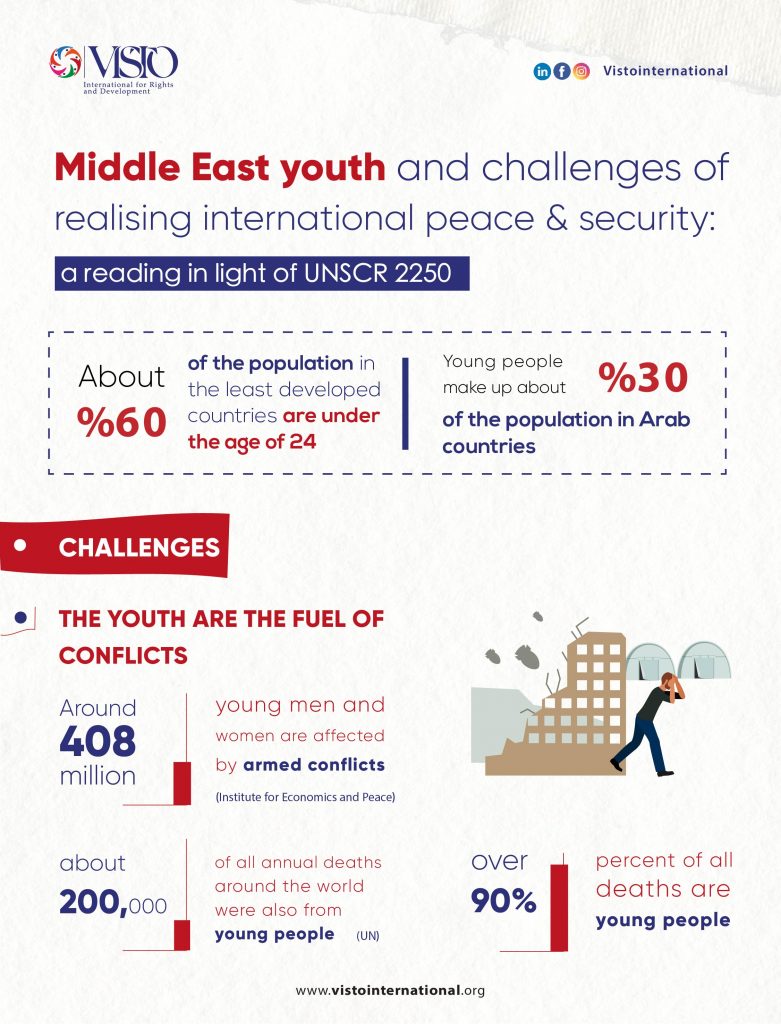
The different dynamics and conflicts, both internal and international, have proven that young people have been at their centre; they have been their fuel and among the most affected by them. According to statistics published in 2016 by the Institute for Economics and Peace, approximately 408 million young men and women live under conditions of armed conflicts and organised violence. This means that one in four young men has been, directly or indirectly, affected by violence and/or armed conflict. According to a report published in 2015 by the United Nations Population Fund, young people accounted for over 90 percent of all deaths. Additionally, about 200,000 of all annual deaths around the world were also from young people.
According to the International Labor Organization, the poverty rate among young people in 2016 stood at 13.1 percent, and nearly 37.7 percent of young workers live in extreme or relative poverty despite having jobs. Furthermore, 36.6 percent of young people prefer to marry at a later age for economic reasons.
On the political level, young people suffer from a lack of representation in parliaments and trade unions. Globally, the percentage of young parliamentarians under the age of 30 stands at 1.9%, and more than 80% of the world’s parliaments have no parliamentarians younger than 30 years.
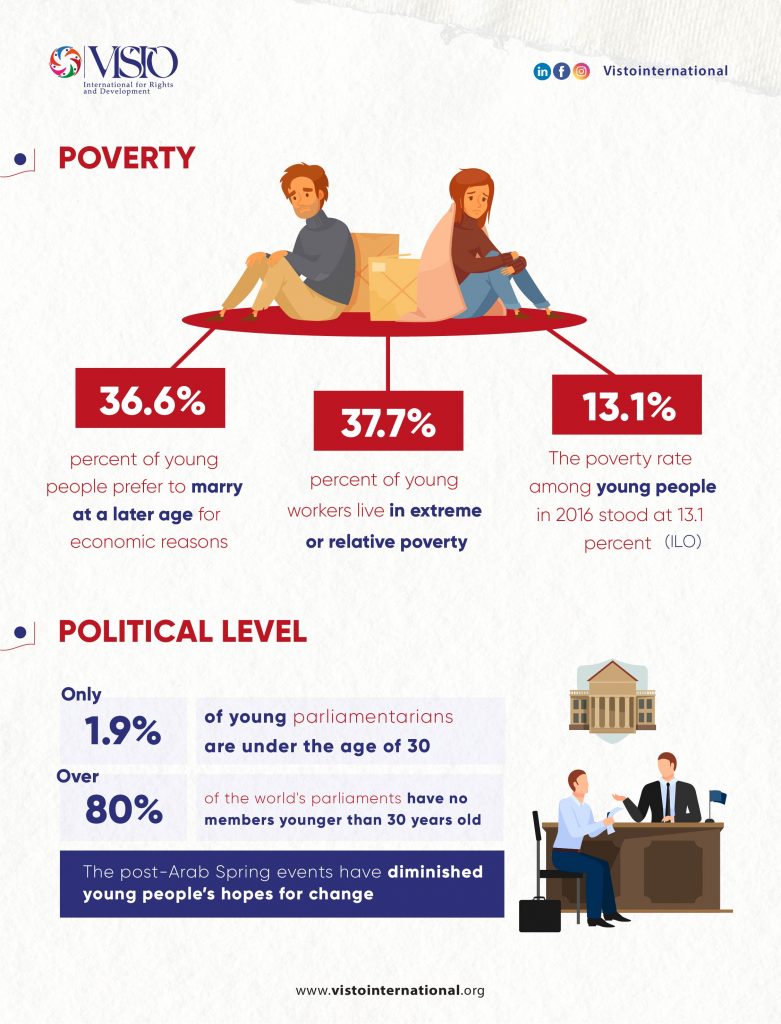
Thus, youth participation, as per the UNSCR vision on YPS, was one of the development strategies designed to enable the youth to influence and control development resources and contribute to public decisions. In order to achieve international peace and security, this resolution showcases the international duty on the part of governments to create a youth-friendly environment that enables their effective participation in decision-making processes. This, in turn, should lead to strengthening the youth’s confidence in governments and in the international community.
The responsibilities of States towards the youth in light of UNSCR 2250
Resolution 2250 (2015) focuses on five key pillars: namely, participation, protection, prevention, partnerships and disengagement, and reintegration. Participation refers to the establishment of mechanisms that ensure effective youth participation in decision-making. Protection, in general terms, revolves around protecting the youth. Prevention, meanwhile, is made possible by implementing programs and providing mechanisms that promote a culture of peace, tolerance and dialogue. Partnerships refer to the positive interaction of the youth with the government, while disengagement and reintegration refer respectively to the removal of youth from militias and extremist groups by providing them with better opportunities, and reintegrating them into society.
These pillars enjoy a degree of significance because they are included in a Security Council resolution. This means that these pillars enjoy a level of enforcement unattainable by general recommendations made in a human rights or development report by an international agency.
Reading through Resolution 2250 and UNGA mechanisms, it becomes clear that states have two important direct responsibilities towards the youth. The first is to ensure increased representation for young people in local, national, regional and international institutions and bodies. The second is to adopt multiple approaches in their structure as well as their internal and external policies. These include:
- A human rights approach, which includes children’s rights, the elimination of discrimination against women, and the World Programme of Action for Youth.
- An economic approach that enhances youth access to economic opportunities and vocational training, also raising the level of education and providing free university education.
- A social and political approach that links youth with civil society and the political arena and provides training opportunities and support for public activities.
- A sociocultural approach that supports dialogue and one that is based on ‘causing no harm’ to others.
Of course, these responsibilities require increased financial expenditure towards developing youth capabilities, especially with regard to infrastructure and facilities to help contribute to refining talents and civic participation. This needs to be coupled with the activation of accountability and monitoring mechanisms vis-à-vis human rights violations. Young people need to be at the heart of these activities, while taking the necessary measures to protect them, especially in cases of conflict and post-conflict situations where compensation is required.
States should, as appropriate, encourage youth participation in peace efforts during and in the aftermath of conflicts, through the relevant entities, funds and programs, including the United Nations Peacebuilding Support Office, the United Nations Peacebuilding Fund and the United Nations Program Development, the United Nations Population Fund, UN Women, and the United Nations Office on Drugs and Crime.
In his 2012 report on peacebuilding in the aftermath of conflict, the UN’s Secretary-General highlighted the importance of the peace building process in creating a wider space for all actors within the state. This includes representatives of women, youth, victims and marginalised communities, in order to participate in public decision-making on all aspects of governance and post-conflict recovery.
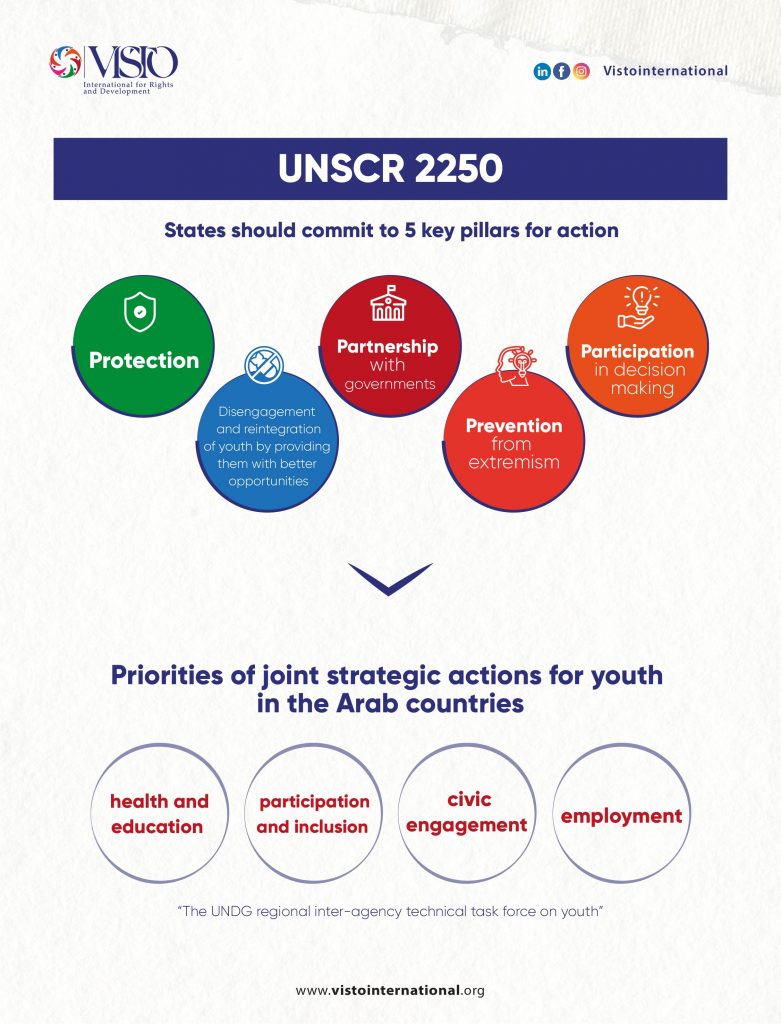
The impact of UNSCR 2250 on the practical dynamics and changing realities for youth
States differ in their response to the Security Council resolution on youth. For the purposes of comparing two different examples, we can address the positive effects of the decision in Europe and the Arab countries.
In Europe, the budget allocated to projects and initiatives related to the inclusion and participation of youth in areas of development, professional training and university education has been increased. As a result, several educational and cultural programs have been set up, such as the Erasmus programs, which provide hundreds of opportunities for the largest number possible of young people in Europe. The Erasmus program allows appropriate education and training, which, in turn, help create more job opportunities. Another example is the SALTO-Youth platform, which was set up following the aforementioned Security Council resolution, and aims to offer young people training to advance their professional development with respect to various community issues. The Eurodesk platform, the first point of contact for young people, however simple, provides personal guidance on how to approach and take advantage of the opportunities and initiatives available to youth.
In Arab countries, where young people constitute about 30% of the population, political instability since 2011 has greatly affected human development in the region. Comparing the periods between 2000-2003 and 2010-2015, the number of armed conflicts in the region has increased from 4 to 11, the end result of which included the creation of many armed groups, and ideological and societal divides. These have had a severe impact on the development process, which required the reforming of the social fabric and following an integrated multi-faceted approach. This approach should combine political and economic development and humanitarian assistance, in addition to strengthening civil society and building peace. The youth should have an essential role in this.
The United Nations Development Group (UNDG) regional inter-agency technical task force on youth had developed a regional framework for joint strategic action for youth in the Arab countries. It included a set of four priorities; namely, employment, civic engagement, participation and inclusion, health and education. On this basis, an increase in employment and training projects for young people is noted in the Arab region as a whole. This, in addition to an increase in funding from the United Nations Fund as well as international, regional and local councils for these activities.
In a recent statement, United Nations Secretary-General António Guterres (2020) referred to the role that youth-led organisations play in implementing the agenda of the Security Council resolution and their active commitment to positive change, calling for unrestricted access to civic space and investment in the meaningful participation of youth.
Obstacles and challenges facing the application of UNSCR 2250
Despite the important role and positive contribution of Resolution 2250 in giving more room for young people to participate in the decision-making process, the reality that young people live in, especially in the Arab region, places enormous obstacles before them. Among the most prominent of these are:
- The political level: Arab societies suffer a weak culture of democracy, especially after young people’s hopes diminished as a result of the Arab Spring and subsequent setbacks. The army and security service’s involvement in the public sphere and the political life, in addition to the one-party system reality both have pushed young people away from participating in political life. This reinforces the negative role of parties, trade unions, governments and parliaments alike in educating young people and making them aware of the concept and mechanisms of political participation. In fact, these facts have helped distance the youth from political participation for the benefit of the ancien régime.
- The economic level: wars and the precarious situation in which most youth live reinforce the spread of poverty, scarcity of job opportunities, internal conflicts, extremism, and poor educational, health and service levels. All of these increase the suffering of young people and hinder their positive role in participation and development.
Conclusion: what can be done?
UNSCR 2250 represented an important step that should be built upon to affirm respect for the rights of young people and the need to involve them in decision-making and the promotion of international peace and security. It is auspicious that the discussion of developments that took place in the implementation of this resolution has been included to the UNSC’s agenda.
In 2018, the UNSC issued its Resolution No. 2419, reaffirming its recommendations in Resolution 2250 regarding youth, which can be considered a plan of action that governments should take into account. The resolution called on governments to guarantee the full and effective participation of young people without discrimination, amending laws that restrict their participation in electoral processes and holding important political positions, and protecting them from crimes that may be committed against them. Having stated this, the resolution also recognised the importance of addressing the root causes of conflicts, and emphasised the importance of an integrated approach to the implementation of the 2030 Agenda for Sustainable Development.
This includes the incorporation of modern technology, which seems to have facilitated youth recruitment and incitement to commit, finance and plan terrorist acts. The resolution also emphasised the increasing contribution of sport and culture to the promotion of development, peace and tolerance. The resolution also urged the widening of youth participation in the work of the United Nations, and acknowledged the role the youth can play through preventive diplomacy in resolving conflicts and promoting a culture of peace, tolerance and intercultural and interfaith dialogue.
Visto International bears no responsibility for the content of the articles published on its website. The views and opinions expressed in these articles are those of the authors and do not necessarily reflect the official policy or position of the Organisation. All writers are encouraged to freely and openly exchange their views and enrich existing debates based on mutual respect.
